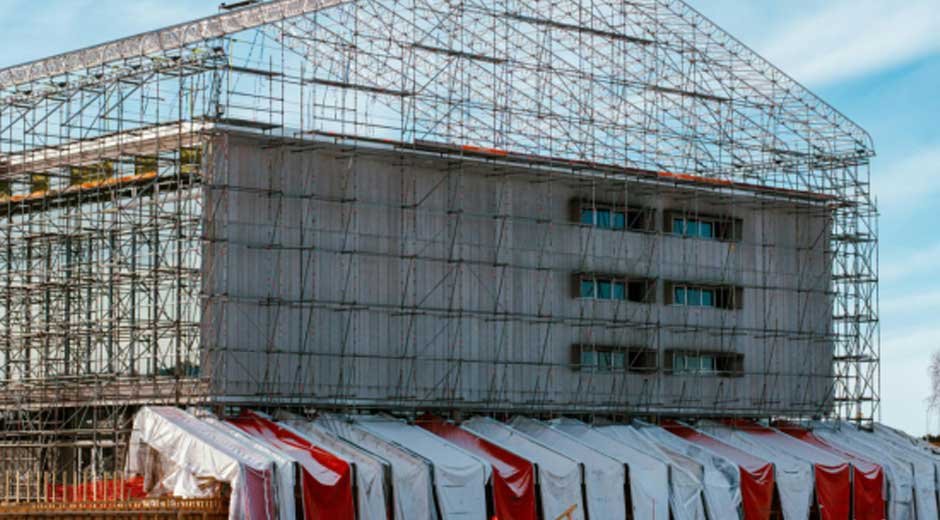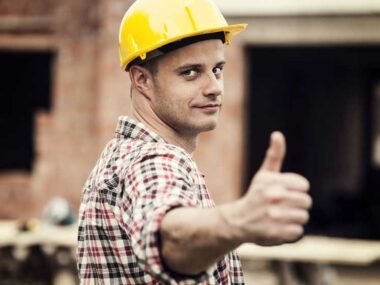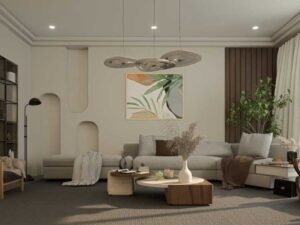Industries need strong buildings that last a long time. Have you ever thought about using fabric structures?
These buildings are tough and easy to set up. They can handle rough weather and provide lots of space.
Many businesses choose them for storage and work areas. They cost less than traditional buildings but are just as useful. Farmers, warehouses, and sports centers all use them.
Why are these buildings becoming so popular? Let’s explore their benefits and uses for different industries.
What Are Durable Fabric Buildings?
Durable fabric buildings are strong, lightweight structures. They use a steel frame covered with a tough fabric.
This fabric resists wind, rain, and sun. It is built to last many years with little maintenance. Unlike brick or metal buildings, they are easy to move.
Some are temporary, while others stay in place for decades. These buildings come in many sizes and are for different industries. They are used for warehouses, sports centers, and farming needs.
They provide a large open space with no columns. This makes them perfect for storing goods or machinery.
Quick and Easy Construction
Fabric buildings are much faster to build than regular ones. Traditional buildings need months of planning and construction.
Fabric structures can be ready in weeks. Their simple design makes assembly quick and easy. Workers can install them without heavy machinery.
This helps businesses save time and money. The steel frame fits together smoothly. The fabric covering stretches tightly over the frame.
No concrete foundation is required in many cases. This means less work and fewer delays.
Businesses can start using them right away. Fast construction allows industries to expand quickly.
Cost-Effective Building Solution
Fabric buildings cost less than metal or concrete structures. Businesses save money on materials and labor. Steel and fabric are more affordable than bricks or wood.
Installation is simple, so fewer workers are needed. These buildings do not always need a foundation.
This reduces costs even more. They require little maintenance over time.
Repairs are cheaper than fixing metal or wood buildings. Energy costs are also lower. The fabric allows natural light inside, saving electricity.
Heating and cooling costs are lower too. Companies looking for budget-friendly buildings choose these structures.
Weather Resistance and Durability
Fabric buildings are made to survive tough weather. They can stand strong against wind, rain, and snow. The steel frame holds everything in place during storms.
The fabric cover resists water and does not rust. Unlike wood, it does not rot or attract termites. Snow slides off easily, preventing heavy buildup.
Some fabrics are fire-resistant for added safety. The buildings last many years with minimal repairs.
They are useful in places with extreme weather. Businesses rely on them for safe and dry storage.
Versatile Uses in Different Industries
Many industries use these buildings for different purposes. Farmers use them to store crops and equipment. Sports teams train in large indoor spaces.
Factories use them for extra workspace. Warehouses store goods safely inside. Construction companies set up temporary offices inside them.
Airports use them to store planes and vehicles. These buildings fit many business needs. They come in different sizes and shapes.
Some are temporary, while others last for years. Because they are easy to set up, they work in many industries.
Energy Efficiency and Sustainability
Fabric buildings help save energy and support the environment. Their design allows natural sunlight inside. This reduces the need for electric lights.
Some fabrics help control inside temperatures. This lowers heating and cooling costs. The steel frame and fabric are recyclable.
Less material waste means a smaller environmental impact. These buildings do not need deep foundations, reducing land damage. They are a greener choice compared to traditional buildings.
Businesses looking for eco-friendly options choose fabric buildings. Sustainability is important for the future. These buildings help industries meet green building goals.
Minimal Maintenance Requirements
Fabric buildings require very little maintenance. Metal buildings rust, and wooden buildings rot over time. Fabric structures do not have these problems.
The steel frame is strong and does not need frequent repairs. The fabric cover is made to last for years. It resists weather damage and does not fade easily.
Cleaning is simple and requires only water and soap. Unlike other buildings, they do not need repainting or repairs often.
This saves businesses money in the long run. Minimal maintenance makes these buildings a great investment.
Portability and Easy Relocation
One key advantage of fabric buildings is their portability. Traditional buildings stay in one place forever. Fabric structures can be moved if needed.
This is useful for industries that change locations often. Construction sites, military bases, and mining companies use them. They are easy to take apart and set up somewhere else.
This saves money on new buildings. Moving a fabric building is faster and cheaper than rebuilding. Businesses that need flexible space find them useful.
Their lightweight design makes transport simple. Portability gives companies more options for their operations.
Customization Options for Business Needs
Fabric buildings come in different shapes and sizes. Businesses can customize them to fit their needs. Doors and windows can be added for easy access.
Ventilation and insulation can be included for comfort. Some buildings have open sides for better airflow. Others are fully enclosed for protection.
Colors and branding options are available. Companies can add lighting, flooring, or partitions. These buildings fit many industries because they are easy to adjust.
Customization helps businesses create the perfect workspace. They can be designed to match different requirements.
Future Growth and Expansion Opportunities
As businesses grow, they need more space. Fabric buildings provide an easy way to expand. New sections can be added when required.
Businesses do not have to buy expensive new buildings. Fabric structures adjust to changing needs. Their flexibility helps companies plan for the future.
If more storage or workspace is needed, expansion is simple. Companies can keep growing without high costs. These buildings allow for smart business growth.
Learn Why Fabric Buildings Are a Smart Choice
Fabric buildings are a smart choice for many businesses. They offer durability, cost savings, and flexibility. They are easy to set up and move if needed.
Different industries use them for storage, workspaces, and more. They stand strong against harsh weather and last a long time. Their energy efficiency makes them an eco-friendly option.
Businesses save money on maintenance and energy costs. These buildings support growth and expansion. Many companies choose them for their affordability and convenience.
Did you find this article helpful? If so, check out the rest of our site for more informative content.










